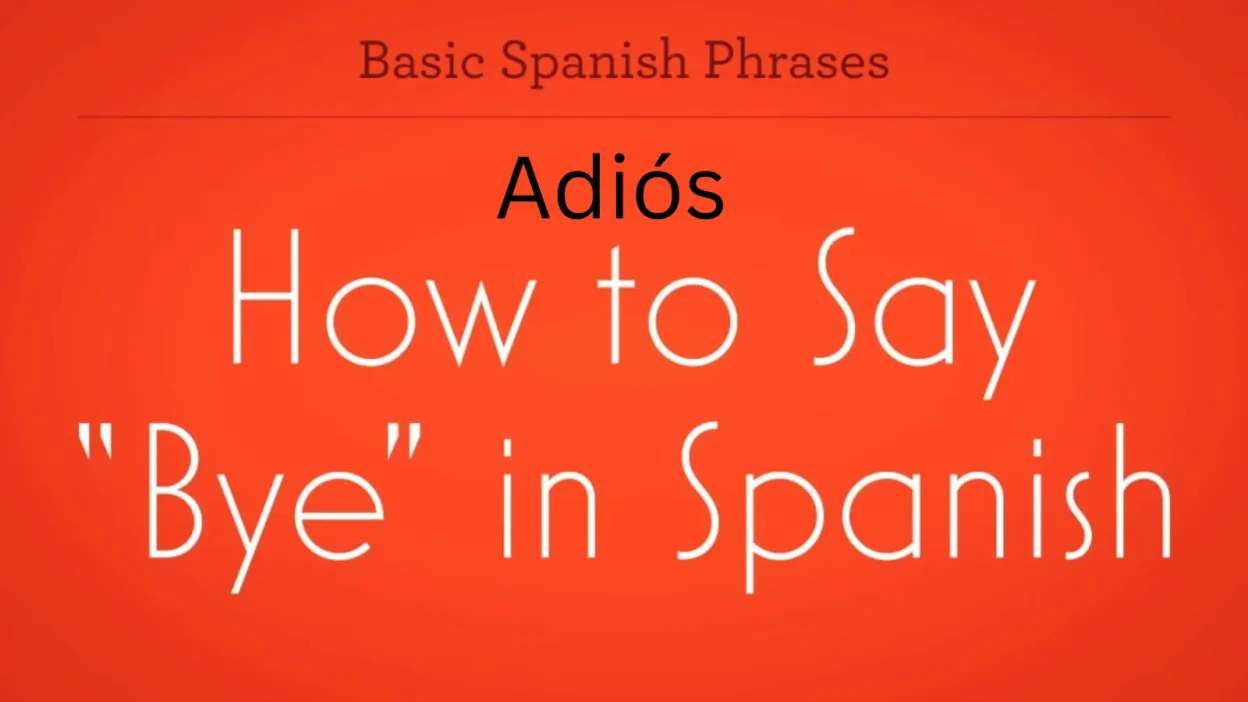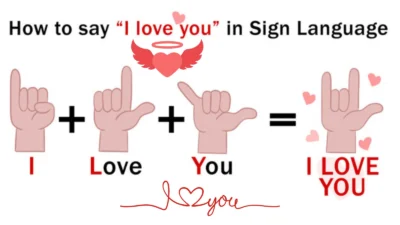If you’re learning Spanish, knowing how to say goodbye is just as important as saying hello. In this guide on How to Say Bye in Spanish, you’ll learn the most common, natural, and useful ways to say bye in everyday conversations. From casual slang to polite phrases, these expressions will help you sound confident when ending any Spanish conversation.
Goodbyes are just as important as hellos. In Spanish-speaking cultures, the way you say bye can reflect your relationship, mood, or even the time of day. Whether you’re ending a formal meeting, saying a casual goodbye to a friend, or leaving a romantic dinner, knowing the right way to say farewell can leave a lasting impression.
Say Bye in Spanish
Let’s explore 15 ways to say bye in Spanish, complete with real-life dialogues and a touch of culture behind each expression.From quick exits to heartfelt farewells, Spanish offers rich and expressive ways to say goodbye.
1. Adiós – Goodbye
Origin:
From Latin ad Deum meaning “to God.” A traditional and universal farewell.
Example:
👤 Usuario A: Bueno, me tengo que ir.
👤 Usuario B: Está bien. ¡Adiós!
Use: Standard goodbye, works in almost any situation.
2. Hasta luego – See you later

Origin:
Literally means “Until later.” Common across all Spanish-speaking countries.
Example:
👤 Usuario A: Me voy al trabajo.
👤 Usuario B: ¡Hasta luego!
Use: Informal but polite; used when you expect to see the person again soon.
3. Chao / Chau – Bye
Origin:
Borrowed from Italian “Ciao.” Became popular in Latin America, especially in countries like Argentina, Chile, and Peru.
Example:
👤 Usuario A: ¡Nos vemos mañana!
👤 Usuario B: ¡Chao!
Use: Very casual and friendly.
4. Hasta pronto – See you soon
Origin:
Means “Until soon.” A warm way to indicate you hope to see someone again shortly.
Example:
👤 Usuario A: Fue un placer conocerte.
👤 Usuario B: Igualmente. ¡Hasta pronto!
Use: Friendly and semi-formal.
5. Hasta mañana – See you tomorrow

Origin:
Literally “Until tomorrow.” Used when you’re sure you’ll see the person the next day.
Example:
👤 Usuario A: Bueno, ya me voy.
👤 Usuario B: ¡Hasta mañana!
Use: Common among coworkers, classmates, or neighbors.
6. Nos vemos – See you
Origin:
Literally means “We’ll see each other.” Modern and informal.
Example:
👤 Usuario A: ¡Me voy, cuídate!
👤 Usuario B: ¡Nos vemos!
Use: Casual and common among peers.
7. Cuídate – Take care
Origin:
From the verb cuidar (to take care). Shows affection or concern.
Example:
👤 Usuario A: Me voy ya.
👤 Usuario B: ¡Cuídate mucho!
Use: Friendly, slightly affectionate.
8. Hasta la vista – Until we see each other
Origin:
Literally “Until the sight.” Gained international fame thanks to Terminator 2, but it was used long before.
Example:
👤 Usuario A: Me voy de viaje.
👤 Usuario B: ¡Hasta la vista!
Use: Semi-dramatic or playful; more poetic than common.
9. Hasta la próxima – Until next time

Origin:
Used when you’re not sure when you’ll meet again, but want to sound friendly.
Example:
👤 Usuario A: Un placer compartir contigo.
👤 Usuario B: ¡Hasta la próxima!
Use: Friendly and polite, often used in meetings or casual goodbyes.
10. Me voy – I’m leaving
Origin:
Direct and simple. From the verb irse (to go away).
Example:
👤 Usuario A: Ya es tarde, me voy.
👤 Usuario B: Está bien. ¡Que descanses!
Use: Neutral; often followed by another goodbye phrase.
11. Que te vaya bien – Hope it goes well for you
Origin:
Literally means “May it go well for you.” It’s a wishful and kind farewell.
Example:
👤 Usuario A: Me voy a la entrevista.
👤 Usuario B: ¡Que te vaya bien!
Use: Friendly and supportive.
12. Que descanses – Rest well
Origin:
Used in the evening or at night. Literally means “May you rest.”
Example:
👤 Usuario A: Me voy a dormir.
👤 Usuario B: ¡Que descanses!
Use: Evening or bedtime farewells; warm and caring.
13. Buenas noches – Good night

Origin:
A classic parting phrase at night. From the greeting family: buenos días, buenas tardes, buenas noches.
Example:
👤 Usuario A: Ya es tarde, me retiro.
👤 Usuario B: ¡Buenas noches!
Use: Formal or informal; only used after sunset.
14. Nos vemos pronto – See you soon
Origin:
Similar to nos vemos, but adds a sense of closeness or urgency.
Example:
👤 Usuario A: Me alegra verte de nuevo.
👤 Usuario B: A mí también. ¡Nos vemos pronto!
Use: Friendly and warm; expresses eagerness.
15. Hasta entonces – Until then
Origin:
Used when you have a specific date/time in mind for the next meeting.
Example:
👤 Usuario A: La próxima reunión es el lunes, ¿verdad?
👤 Usuario B: Sí. ¡Hasta entonces!
Use: Formal to semi-formal; often used in professional settings.
FAQs
1. What is the most common way to say bye in Spanish?
The most common word is “Adiós” — used in most situations.
2. What’s a casual way to say bye to friends?
Use “Chao” or “Bye” — relaxed and friendly.
3. How do I say “See you later” in Spanish?
Say “Hasta luego.”
4. How do you say “See you tomorrow”?
Use “Hasta mañana.”
5. What’s a polite way to say goodbye?
“Hasta luego” or “Nos vemos” works well in polite conversations.
6. How do I say bye in Mexican Spanish?
Mexicans commonly use “Adiós,” “Nos vemos,” and “Ánimo, cuídate” (take care).
7. How do I say “Take care” in Spanish?
Say “Cuídate.”
8. Is “Chao” Spanish or Italian?
It comes from Italian, but it’s widely used in Spanish-speaking countries.
9. How do you say bye in a formal email?
Use “Saludos,” “Atentamente,” or “Un cordial saludo.”
10. How do you end a phone call in Spanish?
People often say “Bueno, nos vemos” or “Hasta luego.”
11. What is a cute/friendly way to say bye?
Try “Besos” (kisses) or “Abrazos” (hugs) with close friends.
12. How do you say “Goodbye forever” dramatically?
Use “Adiós para siempre.”
13. How do kids commonly say bye in Spanish?
Kids often say “Bye!” or “Chao chao.”
14. What’s a professional way to say bye in person?
“Hasta luego” paired with a handshake is safe and professional.
15. How do I say “See you soon”?
Say “Hasta pronto.”
Conclusion:
Goodbyes are more than just words — they’re an opportunity to show care, respect, and connection. By learning different ways to say goodbye in Spanish, you can match your farewell to the situation, whether it’s casual, formal, or deeply heartfelt. So next time you part ways, choose your goodbye thoughtfully and leave the other person with a smile. 🌟



